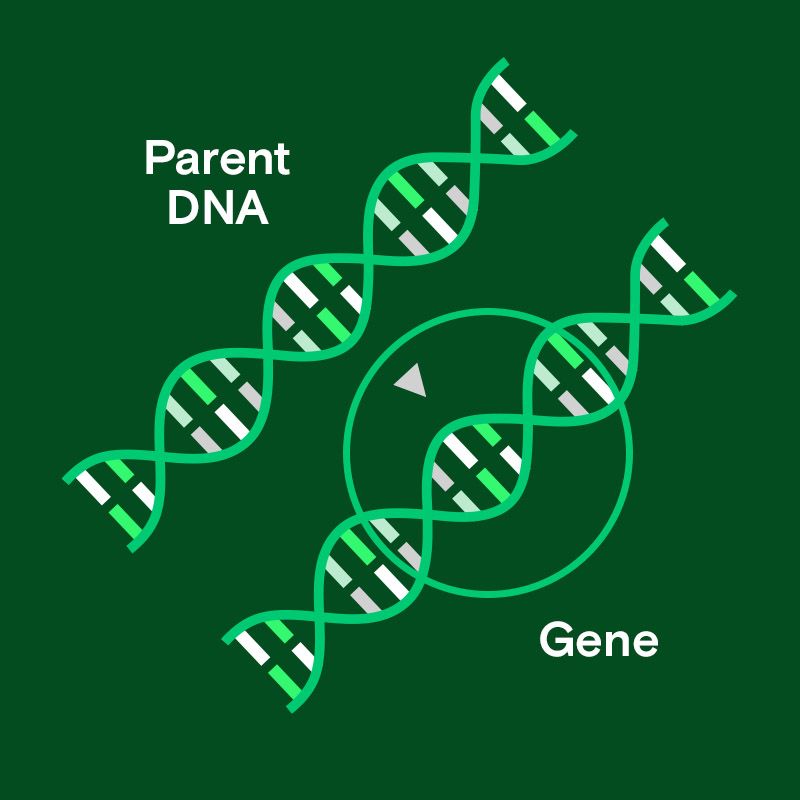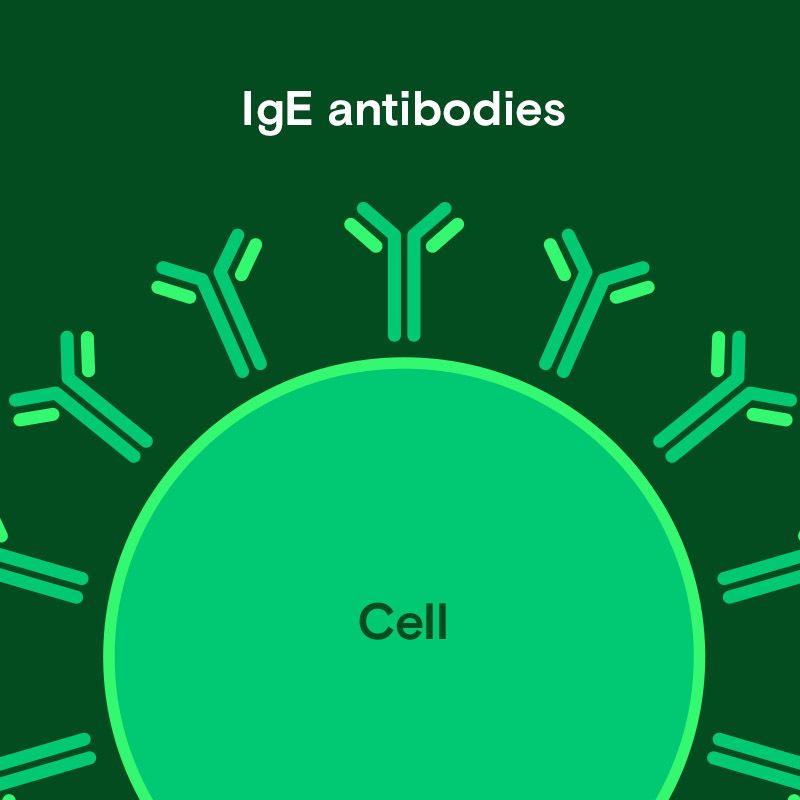
read time: 4 min
Health & Wellness, Nutrition
Lately, your gut has been feeling off-kilter. Could it be something you ate? Taking a home DNA allergy and food sensitivity test reveals you have multiple potential food allergies or sensitivities. Does this mean you should avoid the foods completely or risk an allergic reaction?
Let’s take a closer look into the science linking food allergies and genetics before you start to make radical changes to your diet. The genes you inherit are only 1 of many factors that go into a food allergy or food sensitivity diagnosis.
The power and influence of your DNA
Your DNA (deoxyribonucleic acid) plays a role in every part of you, including your health. Every living thing on earth starts with DNA. Like a blueprint, this fascinating molecule contains our genetic information and provides instructions on how to build our bodies. Genes, which are made up of DNA, influence your physical and biological characteristics. Even health conditions, such as allergies, can be coded into your genes like hair color, eye color, and blood type.
Discovering the connection between allergies and your genetic code
The Human Genome Project,1 an international study of DNA, mapped all the genes in our bodies. Researchers identified genetic markers, which helped link inherited diseases (including allergies) with the responsible gene.
The science is still evolving, but 1 study scanned the complete set of genes of thousands of people exposed to various allergens. It found that those with the SERPINB gene cluster (like a hot spot in our DNA) were at increased risk for a food allergy and the physical reaction, such as throat swelling, most often took place in the esophagus. The study even found that a particular location in the cluster was specifically linked to peanut allergies.2
What triggers an allergy gene to turn on?
So, while it’s possible for allergies to be inherited, that doesn’t mean the allergy will definitely emerge. There are several more factors that must line up perfectly for a true allergy to activate.
Inherit the gene

Proteins turn on the gene

Antibodies poised to fight

Your body reacts to the invader

Good news/bad news about allergies
Our bodies change throughout our lifespans. So, what’s true today may not be in a few years.
Good news: Children often grow out of specific food allergies, especially those to milk or eggs.
Bad news: As people age, we become susceptible to new allergies as well. Seafood allergies, like fish or shellfish, are a typical example.
Decode your food allergy through testing
Observing and testing is the only way to get an accurate, personalized allergy diagnosis. But what kind of test is best, especially considering your genetic factors?
DNA food allergy tests
These are often available to purchase online as at-home kits—but read the fine print. They test the likelihood of having the genetic marker, but they do not diagnose an allergy. If you take 1 of these tests and it shows a predisposition to an allergy, your next step should be to explore more comprehensive test options with your doctor. Insights from these home tests can be informative, but they are not the best tool to use for a diagnosis.
Lab-based food allergy tests
Any time you suspect a food allergy, you should talk to your doctor and get tested to clarify your allergy’s nuances and limitations. Many doctors suggest a combination of the following:
Antibody blood test
Measures IgE antibody levels to indicate a suspected allergy.
Skin prick test
Observes your body’s reaction when exposed to a food allergen.
Component testing
Identifies which individual proteins in a food spike your IgE antibody levels.
Oral food challenge
Observes the severity of your allergic reaction under medical supervision and limits how much of the food you can eat.
Fooling genetics to delay or treat allergies
If you have a genetic marker predisposing you to a food allergy, you may not be able to beat biology. But you can sometimes fool it or at least work around it. Discuss the following treatment options with your doctor:
Desensitization through exposure
Many parents work with a pediatrician or allergist to slowly introduce new foods to babies to gradually desensitize their bodies while their immune systems are still building up. This process is called oral immunotherapy.4
Change food at an elemental level
Cooking or baking foods to a high temperature can restructure some of its protein components. For example, many people with a milk allergy don’t react to baked milk, so they can eat cookies or casseroles where the milk ingredient has been baked.
Medications to prevent or delay a food allergy
If you find out you’re at risk for a food allergen, explore what treatments are available before you ever experience an allergic reaction. For example, medications are being studied to block the IgE antibodies that trigger peanut allergies.
Cope with it
If you discover that your allergic reaction is pretty tame and tolerable to you (think mild rash that lasts a few minutes), you may be OK to eat the food in limited quantities.
There are a few caveats: beware of eliminating a food allergen from your diet and reintroducing it later. If you’re predisposed to that allergy, it may shock your body and send an allergic reaction into overdrive.
There are a lot of variables surrounding food allergies and sensitivities, and they go beyond genetics. Environmental factors, like where you live, your diet, pollution, and allergen exposure, can also play a role. So, DNA test results can’t give you a quick answer on what foods to avoid.
References
1 The Human Genome Project.
Genome.gov. Accessed November 9, 2022. https://www.genome.gov/human-genome-project
2 Marenholz I, Grosche S, Kalb B, et al. Genome-wide association study identifies the SERPINB gene cluster as a susceptibility locus for food allergy. Nat Commun. 2017 Oct 20;8(1):1056. doi: 10.1038/s41467-017-01220-0
3 Anaphylaxis-NHS.
NHS. Accessed November 9, 2022. https://www.nhs.uk/conditions/anaphylaxis/
4 Oral immunotherapy for peanut allergy in young children.
National Institutes of Health. Published February 15, 2022. Accessed November 9, 2022. https://www.nih.gov/news-events/nih-research-matters/oral-immunotherapy-peanut-allergy-young-children#:~:text=This%20involves%20giving%20people%20increasing,peanut%20than%20waiting%20until%20later









